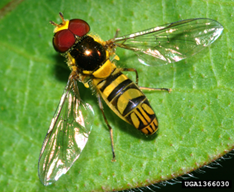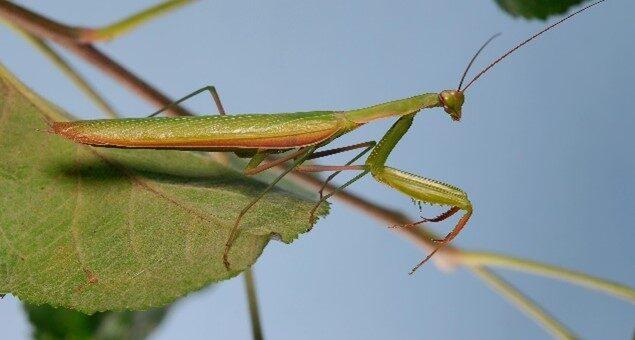Four plant families (the Amaryllidaceae, Apiaceae, Asteraceae, and Labiatae) can be the basis of companion planting. What are companion plants and why bother with them? In this blog series, we will discuss these very questions and how companion plants will help with making gardening easier and more enjoyable.
Companion planting is mixing of aromatic herbs in order to ensure a continuous supply of pollen and nectar for beneficial insects. Beneficial insects are the basis of natural pest control. These include bees, wasps, parasitoid wasps, mantids, ladybird beetles, assassin bugs, lace wings, and hover flies to name a few.
Bees
Bees include the honeybee, solitary or ground bees and bumblebees. These are the “farmers” that visit flowers for nectar and pollen, and as a group they are quite docile. They pollinate plants, which otherwise would not form fruit. Pollination is the transfer of pollen of one plant to the stigma of another plant of the same species. The wasps include yellow jackets and bald-faced hornets. This latter group are the “hunters and gatherers”.
(Photo credit: Lesley Ingram, Bugwood.com)

Wasps
They are predatory on other insects and also visit flowers, but generally are very ill-tempered. The parasitoid wasps are ecto- and endo- parasites of caterpillars, beetles, flies, aphids and true bugs. They lay eggs on or in their host on which their larvae develop. The most well-known is the braconid wasp that parasitizes hornworms. The mud dauber and potter wasps instead build mud nests, then provision them with paralyzed insects they capture in order to nurture their developing larvae.
(Photo credit: Chazz Hesselein, Alabama Cooperative Extension System, Bugwood.org)

Mantids
The praying is often brown or green in color, a stealthy form of camouflage. It waits for prey while disguised among the foliage. It is a generalist, and will consume whatever insect it captures; the females’ appetite doesn’t stop there, as it will eat the male while mating. A true generalist! In early fall, look for the overwintering egg cases glued to branches.
(Photo credit: Joseph Berger, Bugwood.org)
Praying mantid and its egg case
Ladybird Beetles
The ladybird beetle, more commonly called ladybugs, are carnivorous feeders of aphids, scale insects, psyllids and adelgids. Both larvae and adults are predatory. Most are considered beneficial insects, but some are pests that feed on plants (for example, the Mexican bean beetle, and the Squash lady beetle). The elytra (outer wing coverings) of the adult beetles are brightly colored: they are often red, orange or yellow with black spots. These bright colors are warnings to would-be predators that they are toxic. The hemolymph contains pyrazines and alkaloids as toxic principles.
(Photo credit: Eugene E. Nelson, Bugwood.org)

Assassin Bugs
Assassin bugs are true bugs that have piercing sucking mouthparts. These are the “vampires” of the insect world: they pierce their prey then inject a saliva that digests their captures’ innards, then suck the liquified contents!
(Photo credit: Joseph Berger, Bugwood.org)

Lace Wings
The lace wing larvae feed on aphids. Some disguise themselves with a camouflage of debris, in which to ambush their prey, an example is the ant lion. The adults are usually green in color and have four large lacey (membranous) wings which are diagnostic in identification.
(Photo credit: Clemson University – USDA Cooperative Extension Slide Series)

Hover Fly
The adult hover fly as the name suggests, hovers around flowering plants. They are pollinators, and sometimes referred to as flower flies. The fly may be mistaken for a bee or wasp, as they have the markings and coloring much like the yellow jacket or bald-faced hornet, mimicking their appearance. The larvae prey upon insect pests including aphids, thrips and leafhoppers.
(Photo Credit: Susan Ellis, Bugwood.org)

In part 2 of this blog, we will consider the plants you can use that will attract these beneficial insects to our garden.
~ Signing off for now, Joe



